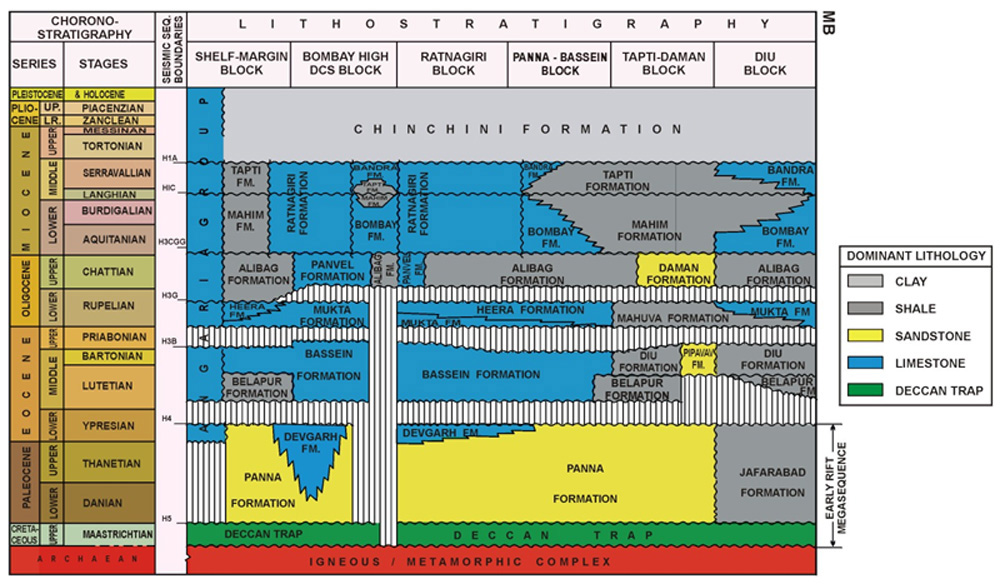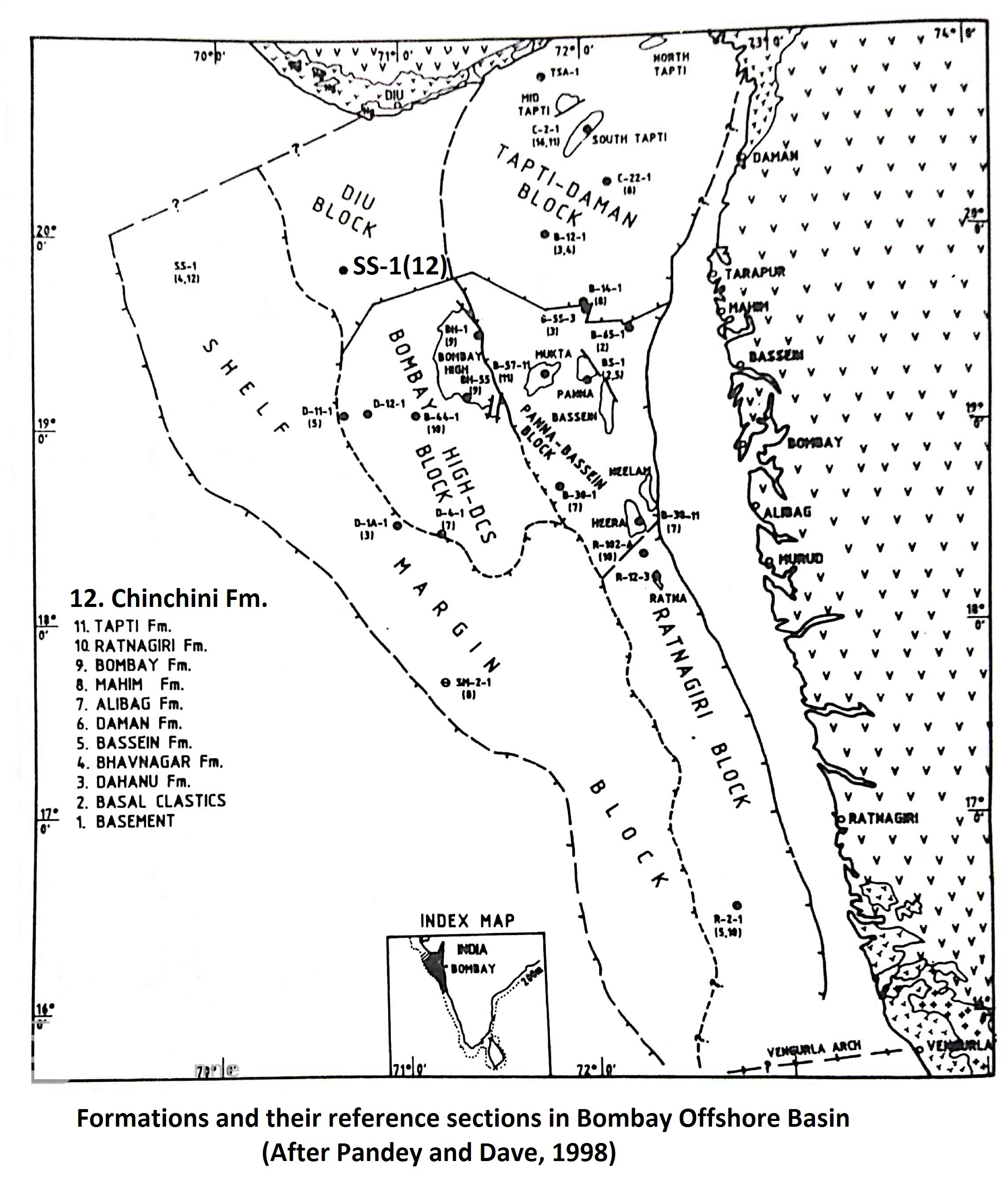Mukta Fm
Type Locality and Naming
Well B – 57 – 11, (depth interval 1940 – 1987 m). [Original Publication: Zutshi, P.L., Sood, A., Mahapatra, P., Ramani, K.K.V., Dwivedi, A.K. and Stivastava, H.C. 1993. Lithostratigraphy of Indian Petroliferous Basins, document V, Bombay Offshore Basin, KDMIPE, ONGC Publication, pp. 1-383.], [Mathur et al., 1983. Age and paleoecology of the Basal Clastics in Bombay High, Heera-Panna and Ratnagiri Area: An unpublished ONGC report.]. The name derived from the Mukta field, where its stratotype has been described. Reference wells: Well R – 12 – 3 (depth interval 1620 -1729 m); Well D – 12 – 1 (depth interval 2552 – 2715 m); Well D – 4 – 1 (depth interval 3620 – 3700 m). 109 m thickness in Well R-12-3, 163 m thickness in Well D-12-1 and 80 m thickness in Well D-4-1
[Figure: Lithostratigraphy in Mumbai Offshore blocks (from NDRDGH.gov.in; after Jitendra Misra, 2009)]
Synonyms: This formation was initially recognized as a member of the Bassein Fm by Mathur et al. (1983). The Bassein Fm has two remarkable units of wider mappability; the lower ‘B Zone’ and upper ‘A Zone’ below the H3 marker in the Mukta-Bassein-Heera field area. The upper ‘A Zone’ has been designated as the Mukta Fm by Zushti et al. (1993).
Lithology and Thickness
Limestone and marl. In the type area, the formation consists of a massive limestone unit underlain by a 15-20 m thick zone of radioactive shales and marlstone. The limestone is fossiliferous. The shale is fossiliferous and carbonaceous. In well SS-1, it shales out. 47m thickness in the type section.
[Figure 1: Formations and their reference sections in Mumbai Offshore Basin (after Pandey and Dave, 1998)]
Relationships and Distribution
Lower contact
Unconformably overlies Bassein Fm generally; but unconformable on Diu Fm at Diu Block.
GeoJSON
Fossils
Foraminiferal assemblage including Nummulites fitchteli.
Age
Depositional setting
Additional Information

